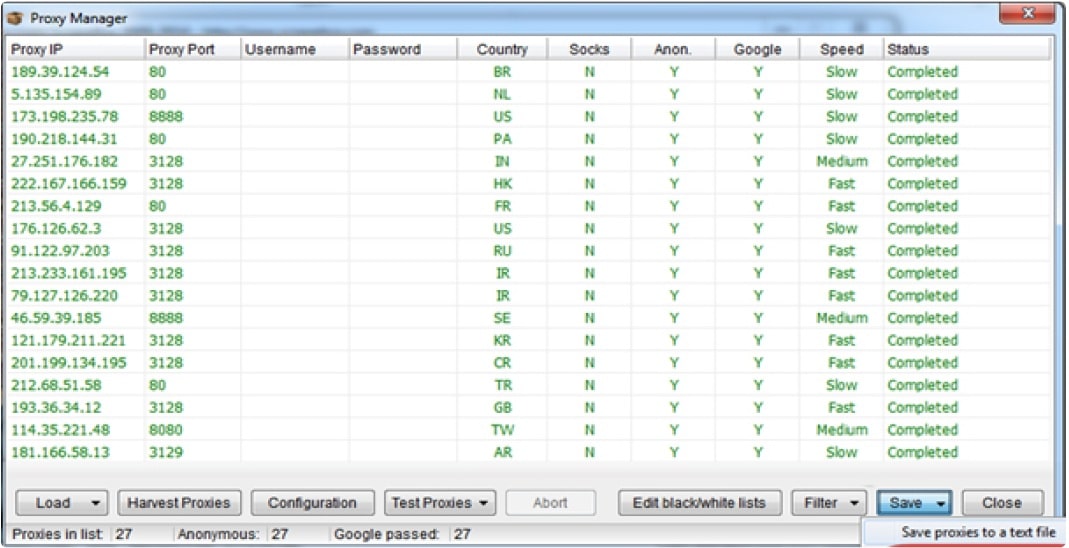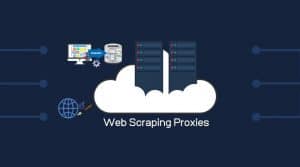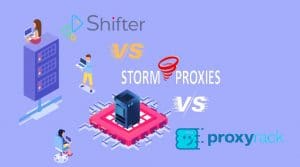
The answer to the very general question of “how many proxies do I need for my application” is exactly what you thought it would be: it depends.
This is actually the answer for most proxy related questions because proxies are, inherently, a situation-based concept. Many people don’t use proxies, know what they are, or have any idea how much of the world is run by them.
That’s not your situation, clearly. If you’re pondering proxies for applications the number will entirely depend on your situation, what the application is, what you’re using the application for, and how much you’re willing to risk.
Let’s dig in!
More Is Better
There are a couple of key factors when considering the number of proxies you need to successfully run an application, but one mentality trumps all of them. More is always better when it comes to proxies.
Why? Well, the main reason you need proxies in the first place is to successfully hide your anonymity. While hiding your individual browsing habits is simple, and could probably be done with a single proxy if necessary (or a VPN), most people are trying to do much more than that. Most people are trying to scrape data, automate social media, and create defensive mechanisms on the internet.

In performing these more complex tasks you will always run up against the risks that are inherent in proxy use. One risk is that your proxies will be blacklisted or banned, and therefore you’ll need new ones.
Related: How to Avoid Proxies Get banned or blocked?
Or, worse than that, your proxies will somehow be traced back to you, and your actual IP address will be blacklisted or banned. This second scenario doesn’t happen very often, but very well could if you’re not safe.
The best method against both of those scenarios? Purchase or find a massive amount of proxies and use them for everything. The more the better, because the more proxies you’re using the more your applications can run without stopping, and the safer you as an individual are.
Paid Proxies for Applications
There are limits to the “more is better” reality, and bulk purchasing proxies just to protect yourself is not an economic move. I’ll discuss free proxies below, but in this section, I’ll cover how many paid proxies you need for a number of scenarios and applications.
As I wrote earlier, it all depends. If you want to simply browse the web under a different IP address, try to find 1-3 proxies to do this. You won’t even need an application — in most cases, you simply plug the proxy IP address and login information into a web browser or computer system settings. The internet will think you’re somewhere else, and you’ll be free to browse anonymously.
For those looking to use proxies in a more calculated way, like scraping Google or purchasing limited-edition Nikes, paid proxies are the only way to go. You can do both of these things with free public proxies, but the private proxies will be faster and more reliable.
There are two types of paid proxies you can use: elite private proxies and shared proxies.
Elite Private Proxies
The most helpful advice when it comes to purchasing elite private proxies is to buy 10 and try them out. Many people recommend 10 private proxies for a basic load of scraping or occasional product purchases. Granted, these 10 proxies need to be absolutely private (not used by anyone else).
Also, check with your proxy provider to see if the proxies delivered are virgin proxies. Virgin proxies are brand new and, most importantly, unseen by Google and other IP banners.
This is an important point, as a virgin proxy will be much less likely to get banned than one that has been used before. More than that, if a single IP has been banned before, it will be banned quicker and longer every concurrent time. It’s alright if you don’t have virgin proxies, but it would be best if you did.
After trying out your 10 proxies in various applications, sort through the results. Were they fast? Did they time out? Did they get banned? The best part about purchasing paid dedicated proxies is that you can usually request new proxies from your provider at no cost. Don’t abuse this policy, though — a provider will likely drop you if you burn through your 10 proxies every 30 minutes and request new ones.
You can get a batch of 10 for relatively cheap, too, often for under $30 per month. If your scraping or reselling of high-end items outweighs that monthly investment, you’re all set.
Shared Private Proxies
Shared is the middle ground between free and private. Some people would never use them, but for a number of applications, they work excellently.
Basically, a shared proxy is one you have to pay for that other people are also using. How many other people is up to the provider, but as long as the proxy has decent upload and download speeds, it’s not a huge issue.
The hope is that those other users don’t get your shared proxies banned, but it’s hard to trust other anonymous proxy users you’ve never interacted with.
The positive of the shared proxy is how cheap it is compared to elite private proxies. You can get a single shared proxy down to under a dollar per month, but you typically have to buy them in large batches.
If you’re going the shared proxy route, I recommend purchasing 100-150 proxies. The spike in numbers is due to the unknown quality of who you’re sharing the proxy with and how much data they are using.
If there are five people on a proxy all using it 24/7 to capture large packets of data, the connection will be slow. Therefore you’ll need a lot of proxies to get the same sort of speeds as a private proxy. Also, shared proxies are more likely to be banned due to their overuse, so having a large batch of them will make sure you have backups.
Don’t Overwork Your Proxies
The two numbers mentioned above — 10 elite private proxies or 100-150 shared proxies — are base numbers for you to experiment with. Those numbers could be enough for your purposes, but only if you stick to cautious and reasonable methods.
Interval Spacing
Most applications have a myriad of options and settings that limit the frequency individual proxies are used. These are very important.
In a specific application, like ScrapeBox, it’s easy to dial in how many seconds you want in between individual pings for a single proxy.
Doing this is highly recommended in general, and necessary if you have a small number of proxies. Again, the number depends greatly on your specific use-case, but generally speaking a 10-14 second delay is standard and cautious.

Every time you use a proxy it increases its presence on the web, and if you’re not careful you will get it flagged by overuse. If you really don’t want that to happen, set the intervals to a minute or more. This way you can run them literally all day and night, every day and night, and not worry about your proxy getting banned.
Setting the intervals of pings is one measure to take — another one is to get a handle on your threads and connections. A thread or connection is how many channels you actually have transmitting information. The proxy is just an IP address that’s trying to connect to other IP addresses.
The thread is the passage through which that information travels, and is typically determined by your ISP or proxy provider. Check with both of these to determine how many threads you have access to so you don’t upset them. Threads and connections are also usually configurable in the API of popular applications, like ScrapeBox or GSA.
The Unofficial ScrapeBox FAQ — which is a helpful resource in its own right — recommends having at least 20-30 proxies for every connection you open. Again, this will change based on your specific situation, but a single connection will also work for 10 proxies.
However, I’ll also point out that this is another place to be cautious. Many people keep the thread to proxy ratio 1:1. If every proxy has its own thread it will look much more like a normal user, rather than a proxy scraping for data. This may seem like overkill to some, but it will help to assure your proxies don’t get banned.
A good example of where the 1:1 ratio is important is if you’re using proxies with emails and email accounts. Email marketing by spambot with proxies is not legal (so don’t do), but you can still use them to open email accounts and click on links in a legal way.
Doing this will put you up against Google’s bot detection methods. You’ll want a 1:1 ratio here, because not only will your IP addresses come from data centers, they’ll be using email in a non-human way.
Free Proxies
Everything I’ve discussed above relates to paid proxies. When you’re paying for a service you don’t want to abuse it, so there are rules to follow. Free proxies are another story altogether. In most cases, I do not recommend free proxies. They are terrible for simple web browsing because they’ll likely snatch your data.
They will not work for specific purchase schemes like limited Nikes or Ticketmaster, as they’ll already be banned from those sites. They are slow, burn out quickly, and need to be updated frequently.
Despite all that, you will use them. I get it—dropping cash on proxies might not be viable. If you’re just starting out it’s a no-brainer to use free proxies, or at least try them to understand the process. Once you start turning a revenue paid proxies are the way to go.
There is one excellent application for free proxies: bulk web scraping. If you need to scrape data from a huge number of sources and aren’t too concerned with accuracy or 100% completion rates, use free proxies.
You can get massive lists of free proxies from various sources, like Black Hat World, then get ScrapeBox and run checks on all the proxies to see which ones still work. Do this daily and you’ll build a collection of free proxies that will work for a little while.
Take the working proxies and run some bulk web scraping tools with them. You can set your ping frequency to a reasonable amount, but there’s not as much need to worry when it comes to free proxies.
They will eventually be banned, either through your own use or someone else. Put each of those parameters as high as they’ll go (as long as you still get somewhat of a return rate), and see what happens.
Don’t set your thread count too high, though, as this has will negatively affect your ISP, and you won’t want them to know you’re bulk harvesting with free proxies on their service.
In Summary
Hopefully, this gives you a good idea of how many proxies you’ll need. More is always better, but there are plenty of ways to make use of a small batch of paid proxies.
For individual applications like ScrapeBox and GSA, there are often forums and help centers to give you advice on the more technical or specific parameters. Get your first batch, set the limits, and see what happens.






